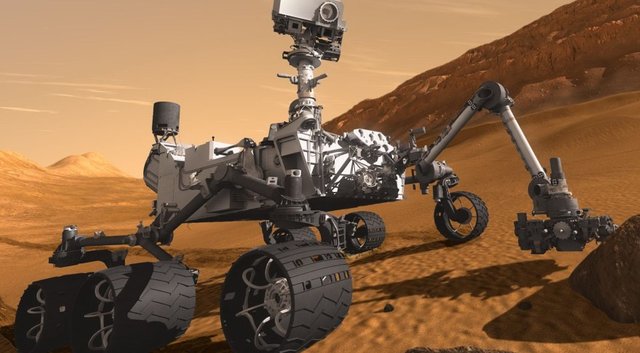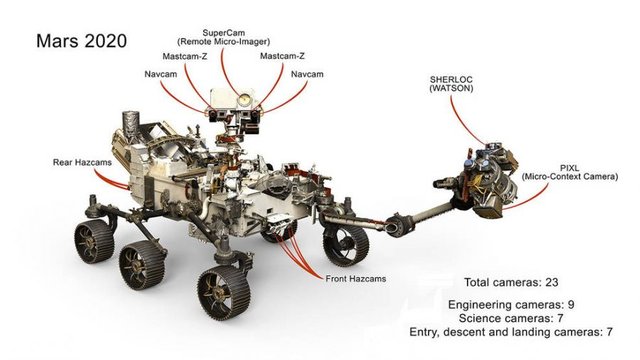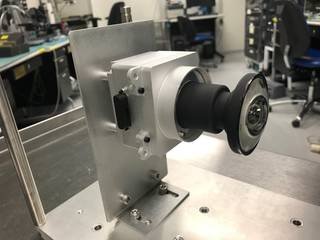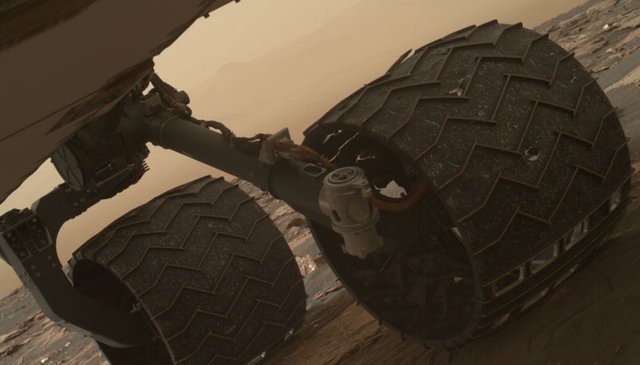Here’s a sneak peek of NASA’s upcoming Mars Rover
It would be an understatement to describe it as ‘high-tech’.

Photo: NASA
According to NASA, if all is well, the next Martian Rover will make its debut in July 2020.
While the robot is still in the works, it appears that this next generation rover – appropriately named “Mars 2020” – is going to be packed with a series of seriously cool gadgets and technology.
Currently under construction at NASA’s Jet Propulsion Laboratory in Pasadena, California, the “Mars 2020”, like its predecessors, will search and explore the Red Planet for signs of life, as well as collect data of Mars’ geology, atmosphere, and any other natural phenomena that may occur.
And according to NASA, this next gen rover is going to be the most advanced of the lot, starting with some 23 different cameras, which is 13 more than Spirit and Opportunity, and six more than Curiosity (all three are earlier versions of the “Mars 2020”).
20/20 Vision
Calling it a “20/20 vision”, NASA has spared no expense on the rover’s ‘eyes’. The cameras have significantly heightened photo sensors and will be decreased in size for portability.
These added camera features would allow the rover to “create sweeping panoramas, reveal obstacles, study the atmosphere, and assist science instruments”.
Not only that, it would be able to provide even more dramatic views of the planet and capture far away movements much more efficiently than its predecessors.
And if that is not enough to blow you completely away, the “Mars 2020” has one other trick up its robotic sleeves.
An additional camera inside the rover itself.
NASA explained that the internal camera can “study samples as they’re stored and left on the surface for collection by a future mission”.

Photo: NASA/JPL-CALTECH
3-D images
On top of the existing cameras, special attention has been paid to “Mars 2020’s” main camera, Mastcam-Z. The ‘Z’ stands for ‘zoom’ and is the core feature of Mastcam-Z.
Acting as the rover’s main eyes, Mastcam-Z has stereoscopic cameras that can capture more 3-D images and spot potential samples, such as erosion and soil textures, which can now be observed from a longer distance (up to the length of a soccer field).
Coloured images for more precise research
All three predecessors, the Spirit, Opportunity and Curiosity rovers, are designed with engineering cameras that can plan drives and avoid road blocks, albeit those footage will only appear in black and white.
The “Mars 2020”, however, will finally be able to capture coloured high-resolution, 20-megapixel images.
With added colours that come with a significantly wider lens and motion-reducing mechanisms, the rover will spend less time panning, snapping pictures and stitching while on the move.
According to Justin Maki of JPL, Mars 2020’s imaging scientist and deputy principal investigator of the Mastcam-Z instrument, all these are possible due to a vast leap in camera technology, which in turn allows each successive mission (and rover) to operate with “better performance” and at a “lower cost”.

Photo: NASA/JPL-CALTECH
New wheels for the new ride
The cameras may have received a massive upgrade, but that is not all the “Mars 2020” has to offer.
Taking into consideration the bad shape of Curiosity’s wheels, which started with two small breaks that gradually escalated to severe tears, the newest Rover will be equipped with more durable ones; these improved wheels will also have better traction and a different, performance-maximizing shape.

Photo: Curiosity's Wheels/NASA/JPL-CALTECH/MSSS
Creating a stronger data link
Though impressive, these upgrades have produced a new challenge for NASA scientists.
With better cameras that can capture and store more content, the data link capacities from Mars to Earth remains the same. This means that while there is much content to analyze, beaming all of it from one planet to another may prove to be difficult.
To combat this problem, rover cameras are now equipped with heightened compression skills, allowing for more transferrals of 3-D images, colors, and high-speed videos.
Signs of life at Mars’ Columbia Hills?
Prior to the long-awaited update of “Mars 2020”, NASA released a potential list of locations that the latest rover might explore.
Something out of a sci-fi show, the list of locations boast exciting possibilities.
The three finalists include Northeast Syrtis, a region that may have been warmed by volcanic activities; the Jezero Crater, a little-known area that could be what is left of a Martian Lake; and Columbia Hills.

Photo: NASA
While some scientists are not particularly thrilled about the third option, due to the area having already been scoped out by NASA’s Spirit lander, some others believe that there may be more to the ‘hills’ than what was already found.
For one, during Spirit’s mission, it discovered opaline silica deposits. These deposits, made from a mineral named amorphous opal, are found on Earth too.
The kicker? These deposits can be sourced at certain hot springs in Chile, and they precipitate out of water when in the presence of microorganisms.
And if proven the same process happens on Mars, well – that could very well mean that we have, after the longest time, finally found life on another planet.
Outer space and endless possibilities
Regardless of where the “Mars 2020” will go, the consensus is that while the journey of discovering life on another planet may have been long and tiresome, and the destination, at times, seemingly impossible to find, there is little doubt that NASA’s rovers will be the wheels that will take us there.